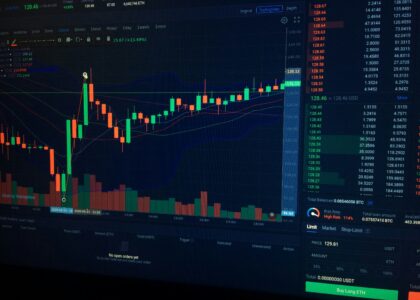How Cryptocurrencies, Tokens, and Blockchain Technologies Are Redefining the Global Business Landscape
For centuries, businesses have relied on traditional financial systems to operate, expand, and thrive. From coins and paper currency to checks, credit cards, and online banking, each era of commerce has been shaped by the tools available to move value between people, companies, and markets. But as the 21st century progresses, the emergence of digital assets—cryptocurrencies, stablecoins, tokens, and blockchain-based systems—has introduced a powerful shift in how businesses think about money, ownership, and trust.
Digital assets represent more than just an alternative to fiat currency; they are a new class of value that can be programmed, traded, tracked, and deployed in ways that traditional finance cannot match. Businesses today are exploring digital assets not only as a method of payment but also as tools for raising capital, engaging customers, streamlining operations, and driving innovation. From Bitcoin payments at retail checkouts to blockchain-enabled supply chain management, tokenized loyalty programs, and smart contract automation, digital assets are embedding themselves into the very DNA of modern commerce.
Yet, this transformation is far from straightforward. Alongside tremendous opportunities come significant challenges: regulatory ambiguity, cybersecurity threats, volatility in asset values, and integration hurdles. Businesses must weigh the benefits of speed, transparency, and cost efficiency against the risks of instability and compliance complexity. We stand at a pivotal moment of economic evolution—a transformative era where digital assets transition from speculative instruments to fundamental mechanisms of business strategy and economic interaction. This is not merely a technological trend but a profound revolution challenging traditional financial frameworks, reimagining value creation, and establishing new paradigms of economic participation.
Understanding Digital Assets
i- What Are Digital Assets?
Digital assets are intangible items of value that exist in digital form, recorded and verified on decentralized systems like blockchains. These include:
- Cryptocurrencies (Bitcoin, Ethereum, etc.) – Digital currencies used as mediums of exchange.
- Stablecoins – Tokens pegged to fiat currencies for price stability.
- Utility Tokens – Provide access to services within blockchain ecosystems.
- Security Tokens – Represent ownership rights or investment contracts.
- Non-Fungible Tokens (NFTs) – Unique, indivisible assets representing ownership of digital or physical items.
ii- Why Digital Assets Matter to Businesses
Digital assets are programmable, borderless, and decentralized. They give businesses new ways to:
- Transact globally with fewer intermediaries.
- Reduce costs and delays.
- Create innovative customer engagement models.
- Enhance transparency and trust through blockchain records.
Digital Assets as a Payment Solution
i- Accepting Cryptocurrency Payments
More businesses are enabling crypto payments, catering to tech-savvy customers and expanding globally. Payment processors now convert crypto instantly into fiat, reducing volatility risks.
ii- Advantages for Businesses
- Lower Transaction Fees compared to credit cards.
- Global Reach by accepting payments without geographic barriers.
- Chargeback Protection as blockchain transactions are irreversible.
iii- Customer Demand
Surveys show that millennials and Gen Z increasingly prefer businesses that embrace modern payment methods, including crypto.
Digital Assets as Investment and Funding Tools
i- Tokenized Fundraising
Businesses can raise capital through Initial Coin Offerings (ICOs), Security Token Offerings (STOs), or Initial Exchange Offerings (IEOs). These models provide faster and more democratic funding access.
ii- Corporate Investment Portfolios
Some companies are holding Bitcoin and Ethereum as long-term assets, treating them as a hedge against inflation and currency devaluation.
iii- Liquidity Advantages
Tokenization allows fractional ownership, giving investors the ability to buy small shares of high-value assets such as real estate or art.
Advanced Digital Asset Technologies
The sophisticated technological ecosystem enabling business transformation.Technological Characteristics:
- Blockchain Asset Architectures
- Advanced Cryptographic Security
- Intelligent Transaction Protocols
- Scalable Digital Value Platforms
- Key Technological Components:
- A. Blockchain Asset Evolution
- Distributed Ledger Asset Systems
- Intelligent Contract Platforms
- Cross-Organizational Interoperability
- Quantum-Resistant Asset Frameworks
- B. Advanced Cryptographic Innovations
- Enhanced Security Protocols
- Comprehensive Asset Verification
- Dynamic Risk Management Technologies
- Intelligent Asset Tracking Systems
Strategic Asset Management
Comprehensive Digital Asset Strategies.Sophisticated approaches to digital asset integration.Strategic Management Characteristics:
- Diversified Asset Portfolios
- Intelligent Risk Assessment
- Dynamic Value Allocation
- Adaptive Economic Strategies
- Strategic Management Components:
- Treasury Digital Asset Reserves
- Alternative Investment Mechanisms
- Blockchain-Based Asset Operations
- Advanced Asset Governance Frameworks
Economic Transformation
Reimagining Business Economic Interactions.Digital assets’ profound impact on organizational economic strategies.Economic Transformation Features:
- Borderless Value Exchanges
- Reduced Transaction Complexity
- Enhanced Global Accessibility
- Intelligent Economic Mechanisms
- Transformation Domains:
- Alternative Investment Strategies
- Decentralized Economic Operations
- Global Economic Participation
- Transparent Value Interactions
Digital assets are no longer a futuristic concept—they are a present-day business tool with transformative power. From payments and payroll to fundraising, customer engagement, and supply chain transparency, digital assets are reshaping every corner of the business world.
The opportunities are vast: global reach, reduced costs, innovative engagement models, and access to new financial systems. Yet, risks like volatility, regulation, and cybersecurity cannot be ignored. Businesses that succeed in this space will be those that adopt strategically, mitigate risks, and embrace innovation.
As we move deeper into the digital age, one thing is certain: the role of digital assets in modern business is only expanding. Companies that adapt now will not only survive but thrive in a world where value is digital, decentralized, and dynamic. Digital assets’ journey through modern business ecosystems represents a profound technological, economic, and strategic revolution. Digital value mechanisms emerge as sophisticated tools for reimagining organizational interactions, challenging fundamental assumptions about economic participation, value creation, and strategic innovation.
We stand at the threshold of a new economic paradigm—a world where business economic systems are more transparent, accessible, efficient, and fundamentally intelligent. Digital assets transcend their initial perception as speculative technologies, becoming sophisticated mechanisms for strategic economic transformation and technological innovation.
The journey of digital assets in modern business represents a testament to human creativity, technological brilliance, and our collective capacity to challenge existing economic systems. It represents a powerful narrative of economic empowerment, technological innovation, and the continuous evolution of organizational economic interactions.
FAQs
Q1: What are digital assets in business?
Digital assets are blockchain-based items of value such as cryptocurrencies, tokens, stablecoins, and NFTs that businesses use for payments, operations, or customer engagement.
Q2: How do digital assets benefit businesses?
They lower costs, enable faster transactions, expand global reach, and create new revenue models.
Q3: Are digital assets safe for businesses to use?
They can be safe if managed properly with secure wallets, compliance practices, and professional custody solutions.
Q4: What are the primary challenges in digital asset adoption?
Technological complexity, regulatory uncertainty, and organizational change management.
Q5: How significant are digital assets for future business strategies?
Digital assets represent a fundamental reimagination of economic interactions and value creation mechanisms.
Meta Description:
Comprehensive exploration of digital assets’ profound impact on modern business ecosystems, analyzing strategic innovations, technological transformations, and the future of economic interactions.




